2021 Year in Review: Top Four Design Influences
Blog • March 9, 2022
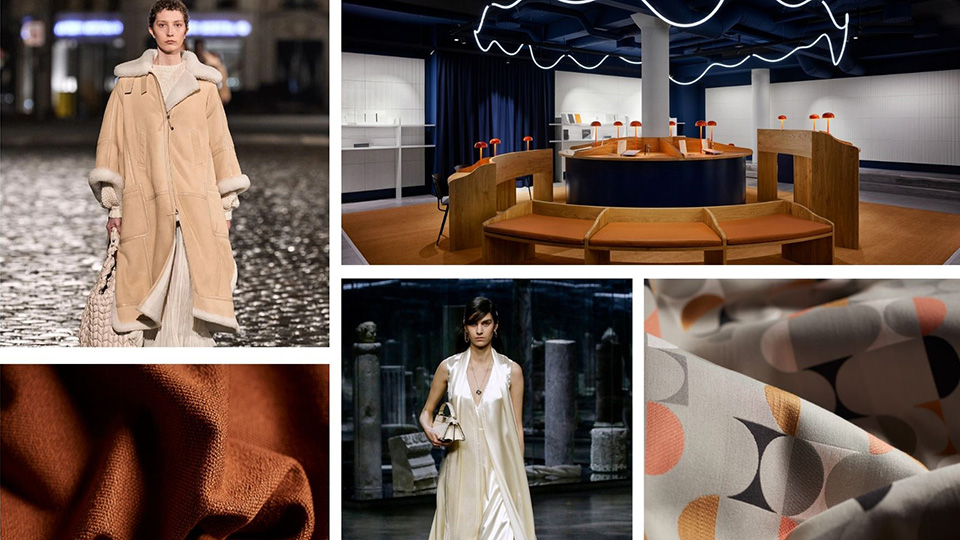
As we move deeper into 2022, we savor the opportunity to reflect on the past year. In which direction did design influences from 2021 propel our consciousness? Where did they cause evolution? Which trends are now flourishing in response?
Join us as we delve into a collection of design highlights that inspired and transformed interiors over the past year – from fashion and architecture to materials and color. We'll also explore which recurring elements surfaced in our most popular textile patterns from 2021.
1. Bold Geometrics
Bold geometrics emerged as a playful theme throughout 2021. As individuals returned to shared spaces such as work and school, we observed a gravitation toward spaces that promoted playfulness as well as eternal hope for a brighter future.
In interior design, we saw bold, geometric shapes take form in elongated fluorescent lighting, sweeping silhouettes, and color-blocking. On the runway, striking large-scale patterns emerged as hallmarks of fashion weeks in 2021. Prada and Arthur Arbesser, in particular, debuted bold, vibrant geometric designs creating a trend reflecting hope and optimism.
To complement these trends, interior designers selected bold geometrics for commercial spaces with distinct textile patterns such as Nomad, Ethos, Arc and Demi. Nomad features eclectic, defined geometry that plays with sharp angles as well as organic shapes, while Ethos plays on systematic geometry, using shapes arranged in an irregular pattern. In contrast, Arc displays a dynamic interplay of rounded shapes. Demi offers a graphic motif that toys with the dichotomy between balance and discord. Though bold and brazen, the designs of these upholstries lend to a wide variety of applications.
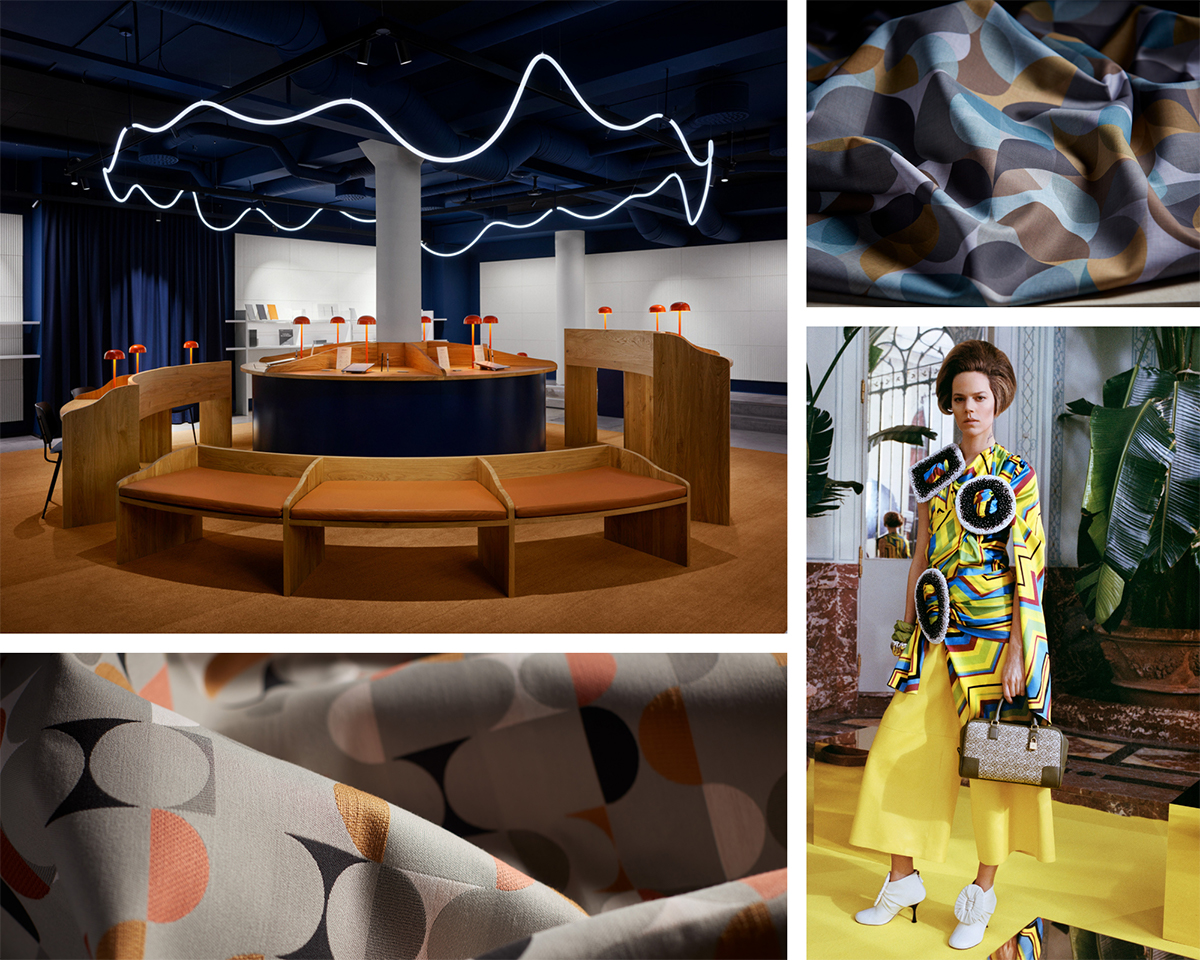 Photos (top left) courtesy of Archdaily.com and (bottom right) Vogue.com.
Photos (top left) courtesy of Archdaily.com and (bottom right) Vogue.com.
2. Natural Texture
Textures inspired by natural materials defined designs and transcended across industries last year.
In architecture, cladding techniques like brick, clay, adobe and concrete, traditionally used for exteriors, cropped up as grounding elements among interiors. These elements outfitted spaces with a warm, earth-like texture, creating comforting spaces for people to connect.
Fashion also showcased these elements in chunky, dimensional knitwear. Designs reminiscent of classic wool abounded in so-called après-ski edits and others as cozy cashmere silhouettes, replacing the traditional “buttoned-up” business-formal fashion.
In commercial interiors, designers incorporated textured textiles from Flow, Etch, Alea and Wander. The natural variation of Flow’s lofty bouclé yarn forms plush materiality. Giving a nod to the handcrafted, Etch evokes the elaborate textural details of intaglio. Along a similar vein, Alea achieves a Donegal tweed-like appearance, while Wander is reminiscent of a distressed leather – both creating a classic, vintage aesthetic. These designs continue to be top choices to bring a tactile or handcrafted appearance into a space.
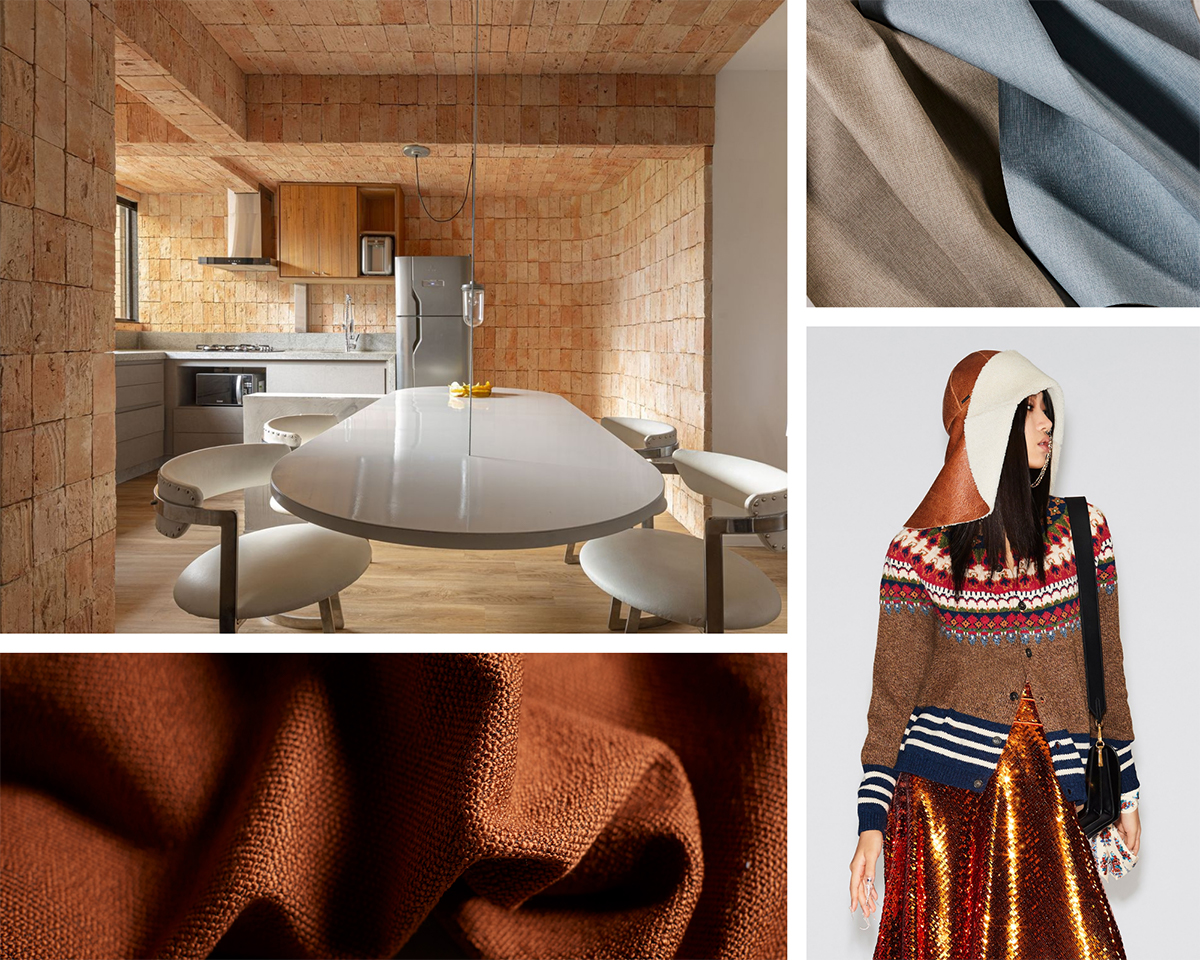 Photos (top left) courtesy of Archdaily.com and (bottom right) Vogue.com.
Photos (top left) courtesy of Archdaily.com and (bottom right) Vogue.com.
3. Purposeful Plaids
A classic reborn, plaid patterns engaged a trendy spin for the modern era as designers excogitated nouveau design applications.
In fashion and beyond, the “Cottegecore” aesthetic became popular throughout 2020 and then evolved into a style known as “Cabincore” in 2021. These movements have led to a resurgence of time-honored prints like gingham, tartan, burberry, tattersall, dupplin, pin check and more. From criss-crossed dresses to matching skirt and blazer sets, plaids reemerged on the runway and in streetwear alike.
A throwback to ‘90s grunge culture also inspired interior designs like tartan wallpaper and bantam upholstery in audacious applications. In rebellion against recent times of isolation, warmer versions of this pattern evoke a sense of comfort and reassurance of happiness.
Naturally, the friendly feelings of plaid transferred into commercial textiles as well. Incorporating both bold and plaid trends in one application, our Prose pattern juxtaposes an assortment of colorful geometric shapes in a familiar sequence, creating a chic, loosely embroidered effect. Tartan, as its namesake suggests, is characterized by criss-crossed bands of color disrupted by a monochromatic grid to create a pixelated, subtle design. Both textiles are a call to attention in any space, whether applied on a large modular sofa or small accent pillow.
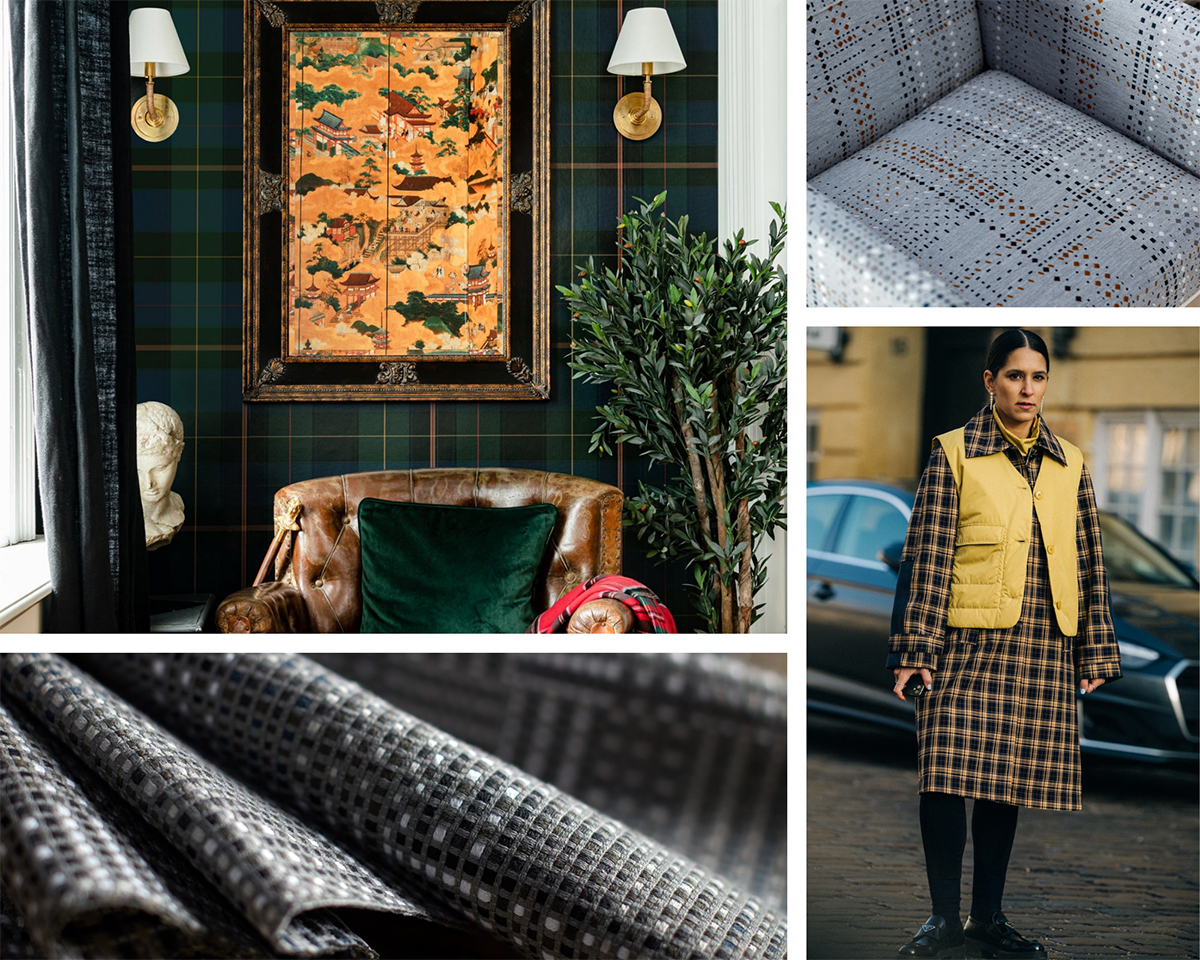 Photos (top left) courtesy of Burkedecor.com and (bottom right) Vogue.com.
Photos (top left) courtesy of Burkedecor.com and (bottom right) Vogue.com.
4. Supple and Chic
Soft, supple materials were a categorical focus throughout the homebound nature of 2020.
Comfortable loungewear and cozy furnishings became sources of solace and repose. As these trends evolved into 2021, we observed designs featuring sumptuous materials imbued with elegance and panache. Hygge-inspired interior designs emerged with aspects of plush, cloud-like seating in neutral tones as well as furnishings covered in bouclé and sherpa materials. Traditional soft textures and natural elements became grounding principles of a palette and the overall space.
This soft, downy style transcended into the fashion world through cream-colored wool jackets and shearling-lined coats. Simple, elegant silk dresses also became popular for layering under heavier flocculent materials.
Likewise, commercial interior design incorporated fabrics with luxurious hands like that of Ooh La Lana, Lyric, Jaunt and Aphrodite. With its tactile wool-blend construction, Ooh La Lana offers a très chic aesthetic with a warm sense of style. Delectably lofty in texture yet resolutely tough, Lyric is gorgeous in its plush simplicity. On the opposite end of the texture spectrum, the silky, luminescent appearance of Aphrodite and the rich, buttery hand of Haven elevate any space to the next level of luxury.
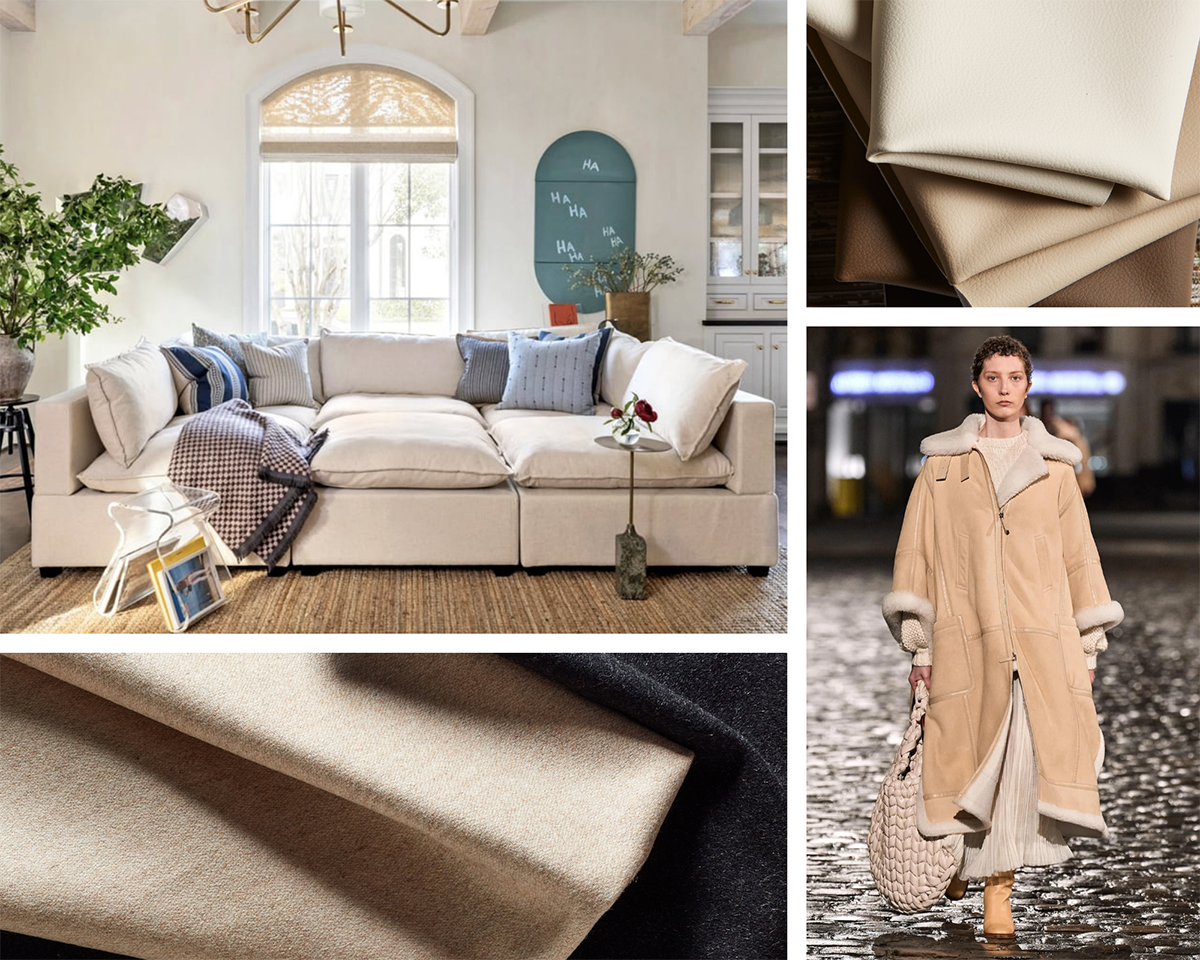 Photos (top left) courtesy of Popsugar.com and (bottom right) Chloe.com.
Photos (top left) courtesy of Popsugar.com and (bottom right) Chloe.com.
A Purposeful Balance
Last year, design trends struck a balance between timeless, luxurious classics and sparks of spirited energy with bold patterns and natural textures. From architecture and interior design to fashion and textiles, we look forward to seeing what new developments this year has in store.
What design predictions do you have for 2022?

